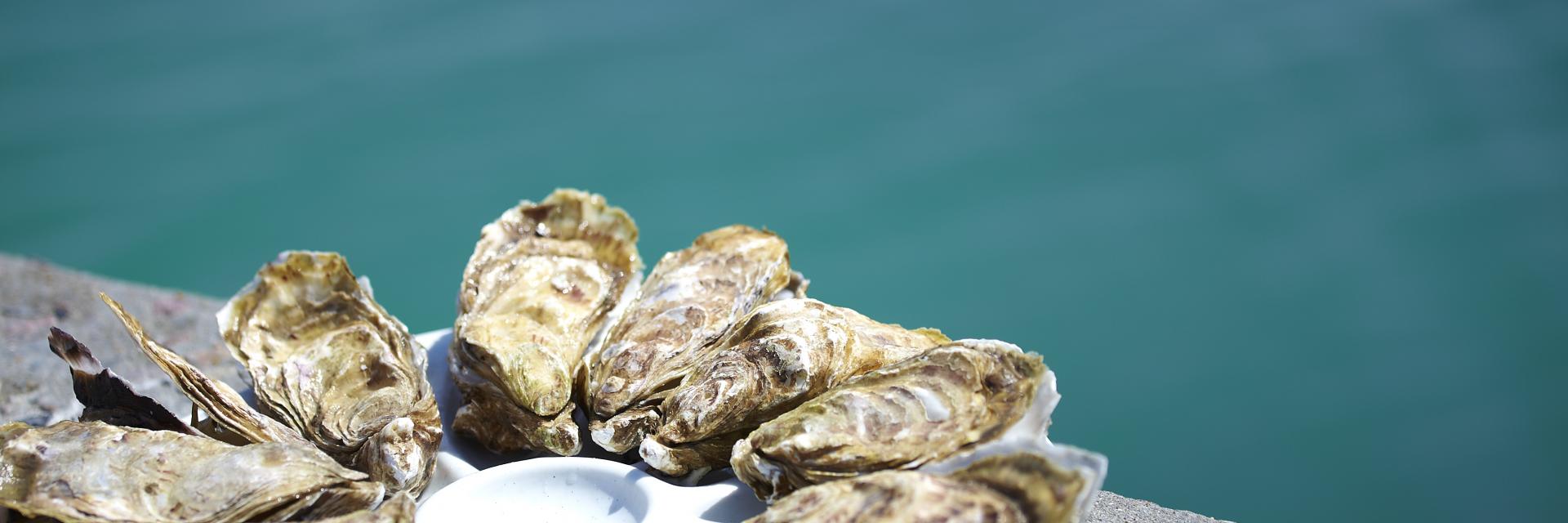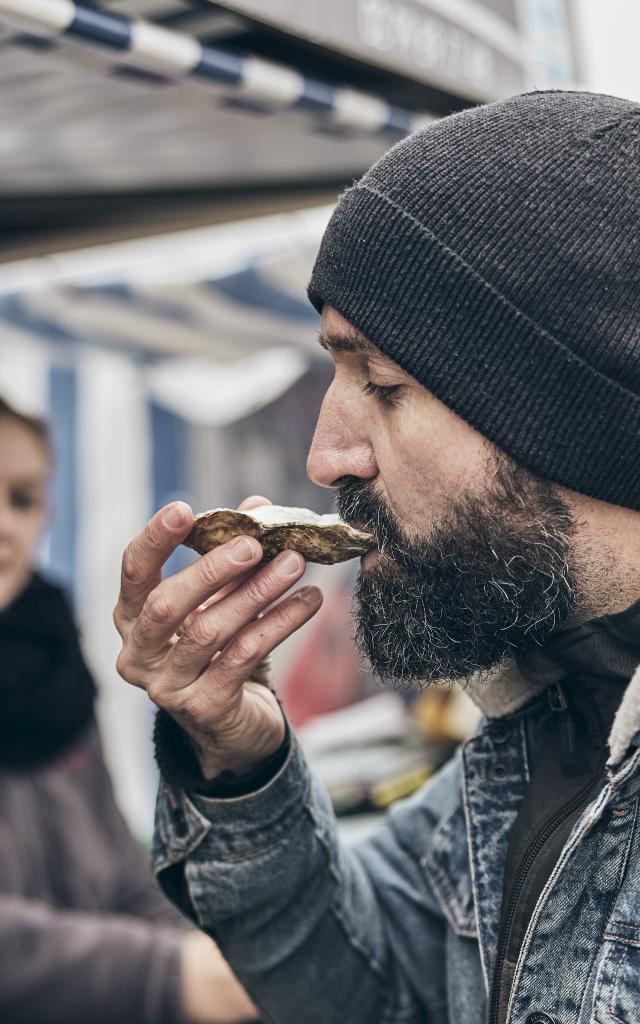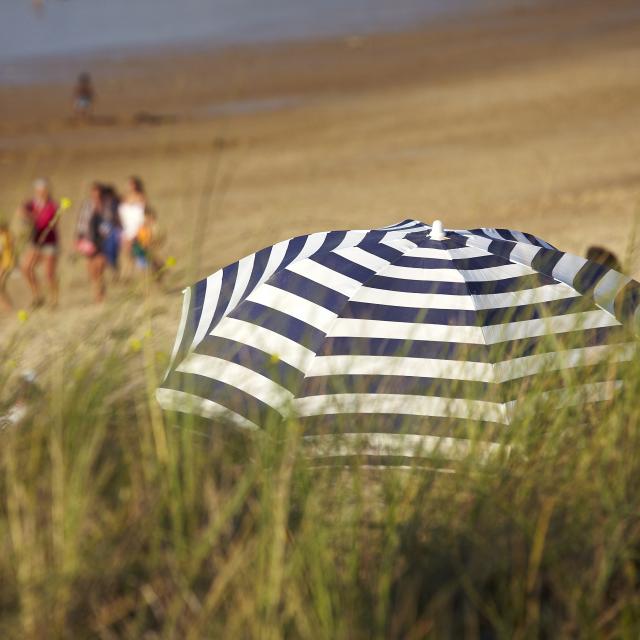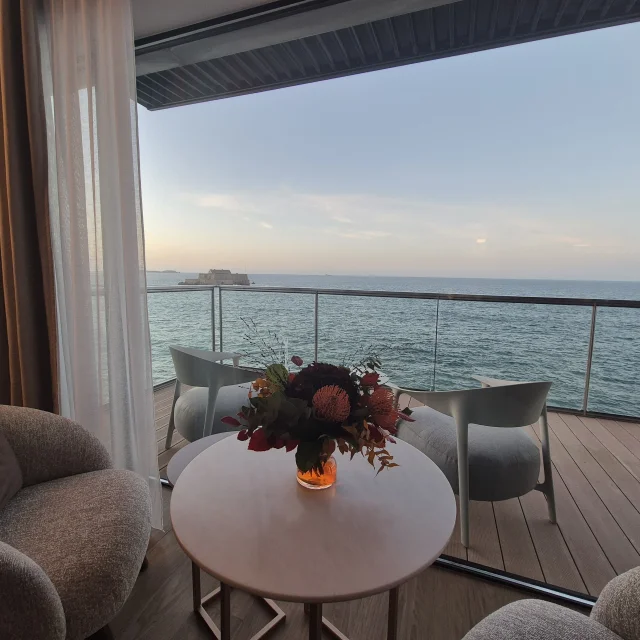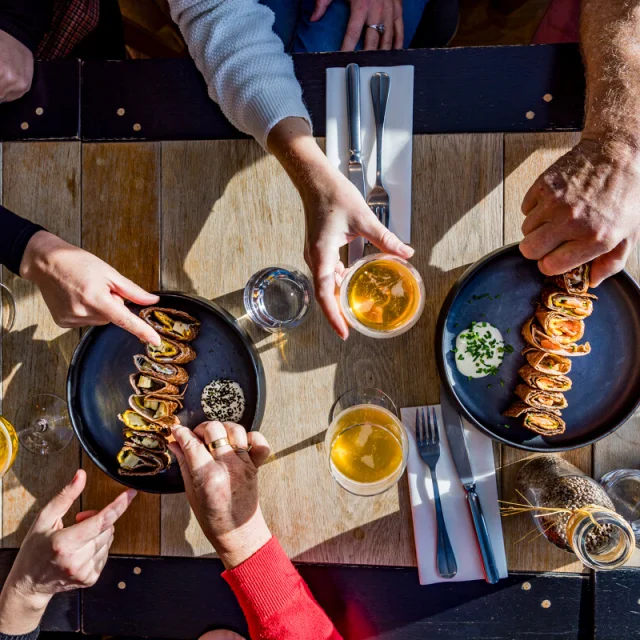An iodised symbol
A symbol of Cancale, oyster farming is listed as part of France’s Intangible Cultural Heritage. Oysters come in all shapes and sizes: hollow, flat and wild. Cradled by the rhythm of the tides in the Bay of Mont-Saint-Michel, they are ideally situated to develop a delicate iodised flavour. The parks that have made the town famous appear at low tide; guided tours allow you to explore them.
 Parcs A Huitres Cancale Smbmsm 2559
Parcs A Huitres Cancale Smbmsm 2559 Mains D Ostreicultrices Marche Aux Huitres Port De La Houle Cancale Alexandre Lamoureux 2782
Mains D Ostreicultrices Marche Aux Huitres Port De La Houle Cancale Alexandre Lamoureux 2782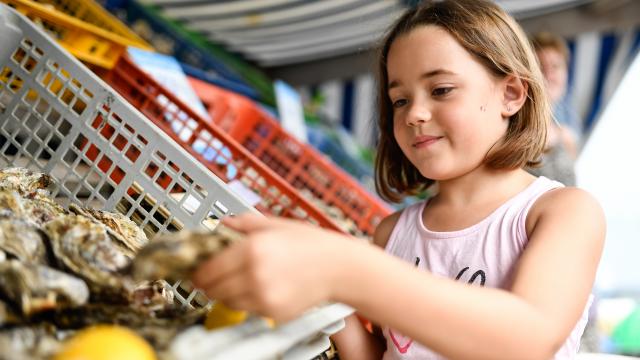 Photographer
Photographer Plateau D Huitres Creuses Port De La Houle Cancale Smbmsm 2656
Plateau D Huitres Creuses Port De La Houle Cancale Smbmsm 2656 Creperie Breizh Cafe Cancale Thibault Poriel 1256
Creperie Breizh Cafe Cancale Thibault Poriel 1256 Parcs A Huitres Cancale Loic Lagarde 670 1200px
Parcs A Huitres Cancale Loic Lagarde 670 1200pxLet’s eat!
The Cancale oyster is by far one of the most renowned in Brittany. Raised in the bay of Mont-Saint-Michel, it is rocked by the strongest tides in the world. The flat oyster, also known as the Belon de Cancale, takes its name from a river in Finistère. It was highly prized at the table of Louis XIV for its firm, white flesh and hazelnut-like flavour. The flat oyster, now produced in deep water in the Bay of Mont-Saint-Michel, remains an exceptional delicacy.
The hollow oyster requires three to four years of farming. It can be eaten raw or cooked. They are characterised by their pronounced iodine flavour. You choose your oysters according to their size.
Sizes range from No. 5 to No. 0; the smaller the number, the larger the oyster. At a restaurant table, directly from an oyster farmer, sitting on the harbour or strolling through the oyster market, discover the flagship product of Cancale, “Site Remarquable du Goût”.
